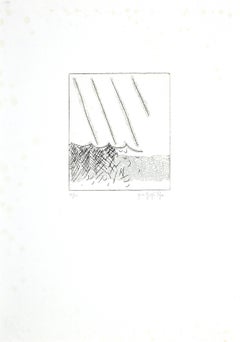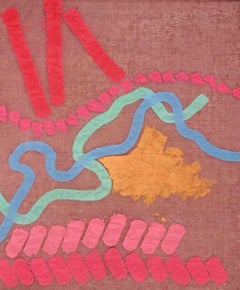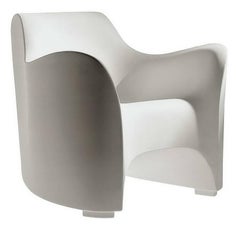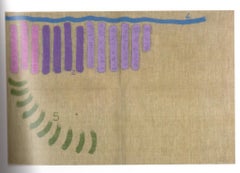Griffa Giorgio
1970s Minimalist Abstract Prints
Etching
Early 2000s Abstract Abstract Paintings
Acrylic
People Also Browsed
21st Century and Contemporary Italian Modern Armchairs
Plastic
21st Century and Contemporary Italian Modern Coffee and Cocktail Tables
Plastic
21st Century and Contemporary Italian Modern Daybeds
Plastic
21st Century and Contemporary Italian Modern Sofas
Plastic
21st Century and Contemporary Italian Modern Coffee and Cocktail Tables
Plastic
21st Century and Contemporary French Stools
Wood
21st Century and Contemporary Mexican Minimalist Armchairs
Wood
Vintage 1960s Italian Mid-Century Modern Vanities
Faux Leather
Antique Late 19th Century Chinese Qing Ceramics
Ceramic
Early 20th Century French Baroque Vases
Stone
Antique 19th Century English Victorian Ceramics
Majolica
Vintage 1930s American Folk Art Toys and Dolls
Tin
Antique 19th Century English Victorian Ceramics
Majolica
21st Century and Contemporary Italian Modern Stools
Plastic
21st Century and Contemporary Abstract Geometric Abstract Paintings
Mixed Media, Acrylic, Canvas
Antique 19th Century English Victorian Ceramics
Majolica
Recent Sales
Early 2000s Contemporary Abstract Paintings
Acrylic, Fabric
1970s Contemporary Abstract Paintings
Acrylic
1990s Contemporary Abstract Paintings
Acrylic, Fabric
Early 2000s Contemporary Abstract Paintings
Acrylic
1990s Contemporary Abstract Paintings
Fabric, Acrylic
Early 2000s Contemporary Abstract Paintings
Fabric, Acrylic
2010s Contemporary Abstract Paintings
Acrylic
2010s Contemporary Abstract Paintings
Acrylic
Early 2000s Contemporary Abstract Paintings
Acrylic
1990s Contemporary Abstract Paintings
Acrylic
Early 2000s Contemporary Abstract Paintings
Acrylic
1980s Contemporary Abstract Paintings
Acrylic
Early 2000s Contemporary Abstract Paintings
Acrylic
2010s Contemporary Abstract Paintings
Acrylic
Giorgio GriffaCanone Aureo - Finale 398 - Original Acrylic Paint on Fabric by G. Griffa - 2010, 2010
1990s Contemporary Abstract Paintings
Acrylic
1970s Contemporary Abstract Paintings
Acrylic
1960s Contemporary Abstract Drawings and Watercolors
Acrylic
1990s Contemporary Abstract Paintings
Acrylic
1970s Contemporary Abstract Paintings
Acrylic
2010s Contemporary Abstract Paintings
Acrylic
1980s Contemporary Abstract Paintings
Acrylic
1990s Contemporary Abstract Paintings
Acrylic
1990s Contemporary Abstract Paintings
Acrylic
1990s Contemporary Abstract Paintings
Acrylic
1960s Minimalist Abstract Prints
Early 2000s Contemporary Abstract Paintings
Acrylic
1980s Contemporary Abstract Paintings
Acrylic
1990s Contemporary Abstract Paintings
Acrylic
Early 2000s Contemporary Abstract Paintings
Acrylic
Late 20th Century Contemporary Abstract Paintings
Acrylic
2010s Contemporary Abstract Prints
Watercolor
2010s Contemporary Abstract Paintings
Acrylic
1980s Contemporary Abstract Paintings
Acrylic
Giorgio Griffa for sale on 1stDibs
Giorgio Griffa was born in Turin in 1936 and he started to paint as a child under the guidance of traditional painters. In 1958, he graduated in law and started to work as a lawyer. In 1960, feeling the need for a new period of artistic training, he enrolled in the private school of Filippo Scroppo, an abstract artist from Turin who has been a member of the Movimento per l'Arte Concreta (MAC). For three years, he attended the lessons, although the works he produced in that period were all in a figurative style. In the following years, he proceeded to progressively reduce the representative elements, without adopting a truly abstract style, until he produced non-representational works, the cycle entitled Quasi dipinto (Quasi Painting). In this cycle, he made the choice of unfinishedness that was to become a constant feature of his work. He displayed these works in 1968 at the Galleria Martano in Turin. In 1969, he started to exhibit with the Galleria Sperone, also in Turin, in 1970, he had shows at Ileana Sonnabend's galleries in New York and Paris. It was in that period that he associated with exponents of Arte Povera, whom he recalled on the occasion of his exhibition in 2000 at the Galleria Salzano in Turin as follows, "The intelligence of the material wasn't used as a tool for new syntheses of form - which, however, inevitable - but it became the protagonist of the work, with the artist's hand at its service. Similarly, since I'm convinced of the intelligence of painting, I put my hand at the service of the colors that encountered the canvas, limiting my involvement to the simple gesture of placing the brush.”
For about two years, from 1973–75, Griffa painted almost exclusively horizontal lines: these consisted of a continuous line that was repeated - that is, by a series of brushstrokes placed one next to each other horizontally. In the following years, a series of different signs started to coexist on the canvas. He started the cycle that he called Connessioni o Contaminazioni (Connections or Contaminations), a modified version of the previous cycle entitled Segni primari (Primary Signs). This was the period in which Griffa's reflections of a Minimalist nature paved the way for new thoughts on painting and sculpture's remarkable story of memory. In reality, Griffa wasn't a Minimalist and Paolo Fossati has clarified the difference between Griffa's work and Minimalism, but this was the climate. So in 1979, he painted a triptych, not by chance entitled Riflessione (Reflection), consisting of three large canvases dedicated to Matisse, Kleee and Yves Klein respectively. This triptych, displayed in 1980 at the Galleria Martano in Turin (and then at Lorenzelli Arte in Milan), constituted the first step towards another cycle, which was eventually entitled (in 2000) Alter Ego. In this, each work was dedicated to artists of every era. With long pauses, this cycle continued for 30 years.
In the 1980s, there was a notable development of the cycle entitled Contaminazioni. The signs were often accompanied by areas of the color of varying sizes, creating an indeterminate account amidst the memories of painting. At the beginning of the 1990s, Griffa started the cycle Tre linee con arabesco (Three Lines with Arabesque) in which each work, whether it is on canvas, a drawing, a watercolor or an engraving, contains - among the other signs - three lines and an arabesque. These works are numbered in the order in which they are executed: the most recent is number 1,661. The numbering is intended to establish the position of the individual work within the series and, at the same time, to remind us of the fact that they belong to this series. Later in the 1990s, Griffa started another cycle in which he made use of numbers. This was the cycle entitled Numerazioni (Numbering). Here, in each picture, the numbers indicate the order in which various signs and colors composing it were applied. The numbers are intended, on one hand, to underline the order in which the pictorial event takes place and, on the other hand, the development of this event, with one sign after another in both time and space. It should, however, be noted that there is no possibility of development or progress from one cycle to another, but there is merely the presence of different aspects of coming into being. Thus, rather than following one another, the cycles overlap, intersect and coexist next to each other, perhaps remaining suspended for years and then started again.
The cycles Griffa has produced in the 2000s confirm this aspect: in fact, their origin dates back to 20 years previously, at the end of the 1970s. The cycle Alter Ego, with its reference to other artists, such as Piero Della Francesca, Tintoretto, Josef Beuys or Mario Merz, originated from the triptych of 1979 entitled Riflessione (Reflection), passed through various works of the 1980s and 1990s and clarified its identity with a group of works in the 2000s. In its turn, the cycle Sezione Aurea (Gloden Section), which regards this endless irrational number characterizing its mathematical aspect, avails itself of the transparencies of the tarlatan canvas that were already a feature of Griffa's great work Dionisio (Dionysus) of 1980, which was exhibited at the Venice Biennale in the same year. Between 2009 and 2010, Griffa had his solo shows at the Museum of Baotou (Baotou, Inner Mongolia), at the BaGuaShan Art Gallery (Taiwan) and the Gehua Art Gallery (Pechino). The Museum of Contemporary Art in Rome (MACRO) organized his exhibition from February 12th, 2011 to March 13th, 2011 accompanied by a catalog, Giorgio Griffa, Golden Ratio, curated by Luca Massimo Barbero, MACRO, Marsilio Editori, 2011.
A Close Look at contemporary Art
Used to refer to a time rather than an aesthetic, Contemporary art generally describes pieces created after 1970 or being made by living artists anywhere in the world. This immediacy means it encompasses art responding to the present moment through diverse subjects, media and themes. Contemporary painting, sculpture, photography, performance, digital art, video and more frequently includes work that is attempting to reshape current ideas about what art can be, from Felix Gonzalez-Torres’s use of candy to memorialize a lover he lost to AIDS-related complications to Jenny Holzer’s ongoing “Truisms,” a Conceptual series that sees provocative messages printed on billboards, T-shirts, benches and other public places that exist outside of formal exhibitions and the conventional “white cube” of galleries.
Contemporary art has been pushing the boundaries of creative expression for years. Its disruption of the traditional concepts of art are often aiming to engage viewers in complex questions about identity, society and culture. In the latter part of the 20th century, contemporary movements included Land art, in which artists like Robert Smithson and Michael Heizer create large-scale, site-specific sculptures, installations and other works in soil and bodies of water; Sound art, with artists such as Christian Marclay and Susan Philipsz centering art on sonic experiences; and New Media art, in which mass media and digital culture inform the work of artists such as Nam June Paik and Rafaël Rozendaal.
The first decades of the 21st century have seen the growth of Contemporary African art, the revival of figurative painting, the emergence of street art and the rise of NFTs, unique digital artworks that are powered by blockchain technology.
Major Contemporary artists practicing now include Ai Weiwei, Cecily Brown, David Hockney, Yayoi Kusama, Jeff Koons, Takashi Murakami and Kara Walker.
Find a collection of Contemporary prints, photography, paintings, sculptures and other art on 1stDibs.
Finding the Right abstract-paintings for You
Bring audacious experiments with color and textures to your living room, dining room or home office. Abstract paintings, large or small, will stand out in your space, encouraging conversation and introducing a museum-like atmosphere that’s welcoming and conducive to creating memorable gatherings.
Abstract art has origins in 19th-century Europe, but it came into its own as a significant movement during the 20th century. Early practitioners of abstraction included Wassily Kandinsky, although painters were exploring nonfigurative art prior to the influential Russian artist’s efforts, which were inspired by music and religion. Abstract painters endeavored to create works that didn’t focus on the outside world’s conventional subjects, and even when artists depicted realistic subjects, they worked in an abstract mode to do so.
In 1940s-era New York City, a group of painters working in the abstract mode created radical work that looked to European avant-garde artists as well as to the art of ancient cultures, prioritizing improvisation, immediacy and direct personal expression. While they were never formally affiliated with one another, we know them today as Abstract Expressionists.
The male contingent of the Abstract Expressionists, which includes Jackson Pollock, Willem de Kooning and Robert Motherwell, is frequently cited in discussing leading figures of this internationally influential postwar art movement. However, the women of Abstract Expressionism, such as Helen Frankenthaler, Lee Krasner, Joan Mitchell and others, were equally involved in the art world of the time. Sexism, family obligations and societal pressures contributed to a long history of their being overlooked, but the female Abstract Expressionists experimented vigorously, developed their own style and produced significant bodies of work.
Draw your guests into abstract oil paintings across different eras and countries of origin. On 1stDibs, you’ll find an expansive range of abstract paintings along with a guide on how to arrange your wonderful new wall art.
If you’re working with a small living space, a colorful, oversize work can create depth in a given room, but there isn’t any need to overwhelm your interior with a sprawling pièce de résistance. Colorful abstractions of any size can pop against a white wall in your living room, but if you’re working with a colored backdrop, you may wish to stick to colors that complement the decor that is already in the space. Alternatively, let your painting make a statement on its own, regardless of its surroundings, or group it, gallery-style, with other works.





